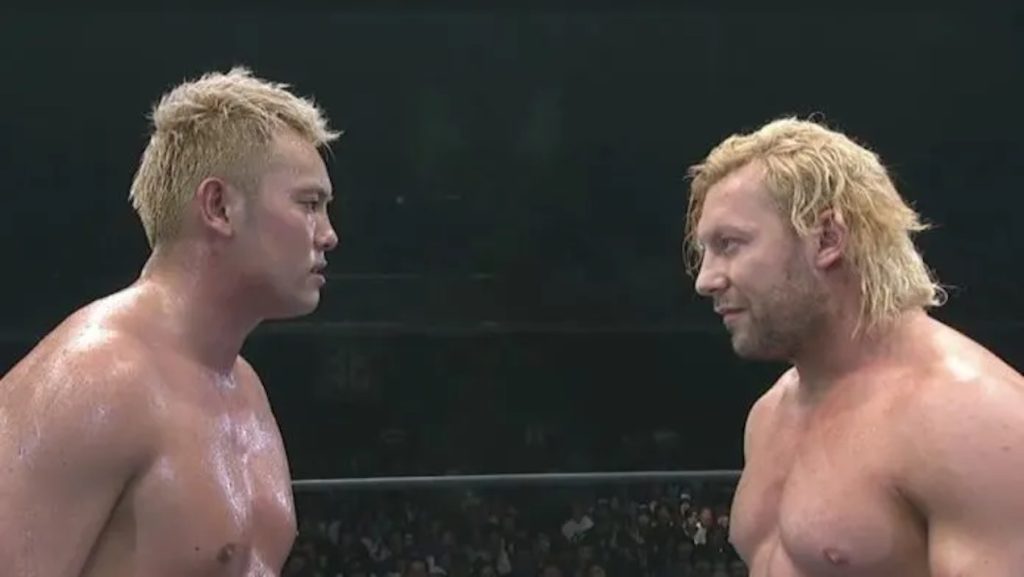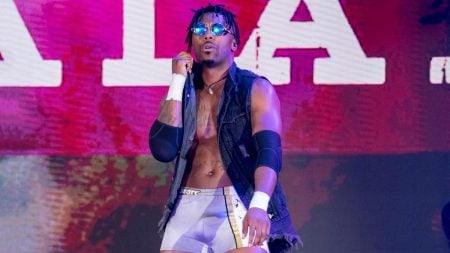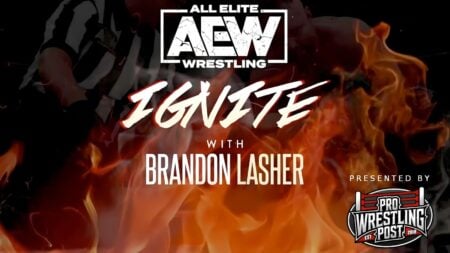January 4, 2016: lightning struck twice on the same day. One was a rare, but long-term plan. Hiroshi Tanahashi had passed the torch to Kazuchika Okada for a seamless transition of power between Aces.
Meanwhile, the main event scene of New Japan was halved when Shinsuke Nakamura and AJ Styles were signed away by WWE. The irony being that NJPW had grown so buzzworthy and competitive that, of course, their top stars got poached.
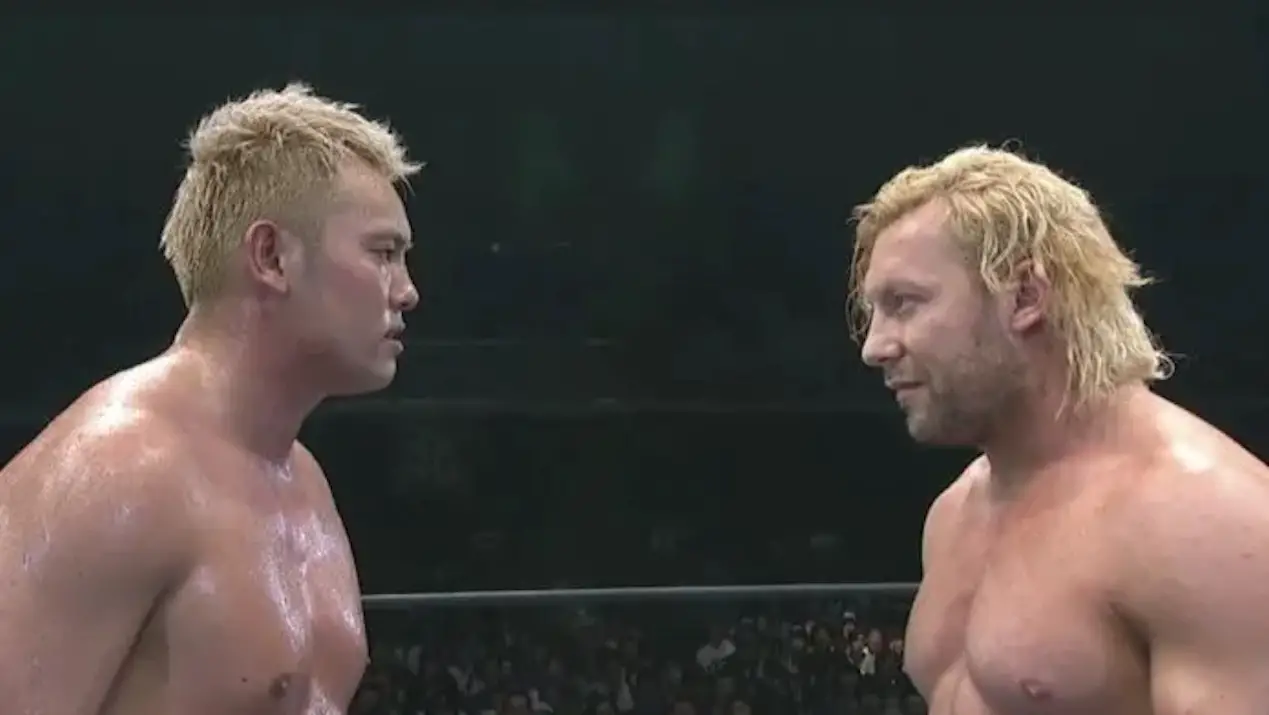
Okada, Omega, and the Global Age Pt 1
The 21st-century Golden Age was at a crossroads. While providing a great product was still a priority for New Japan Pro Wrestling, they also decided to set their sights on the world.
Rather than be content with their success as the #2 company on the planet, they decided to create their own Global Age. To make inroads in the Western market. To put on some of the best matches in the history of the sport. Even if it meant trying innovative, risky ideas.
The first five years of Wrestle Kingdom saw NJPW raised from the dead. The next five years of Wrestle Kingdom saw NJPW raised to new heights. As they went higher and higher above the clouds, the path for the next era was clear.
NJPW in 2016

The first step was to turn Kenny Omega into a heavyweight star. After Wrestle Kingdom 10, he made his intentions quite clear: via taking over Bullet Club from AJ Styles, laying out Shinsuke Nakamura, and targeting the vacated Intercontinental championship.
When he defeated Tanahashi in February for the belt, Dave Meltzer in the Wrestling Observer Newsletter likened it to famous matches when Sting, Mitsuhara Misawa, and Steve Austin were elevated into business-changers in one night.
In this new era, Omega and his friends, the Young Bucks, had dubbed themselves “The Elite.”
Soon after, the landscape shook again when Tetsuya Naito won the New Japan Cup and challenged for the IWGP title. Lest his losing streak at the Tokyo Dome fool anyone, the man is a genius in the ring the other 364 days a year.
Despite the blatant cheating, the crowd grew to love Los Ingobernables de Japon. LIJ were rebels with a cause, blaming the weakened state of New Japan on establishment figures like Tanahashi, the booker Gedo, and ownership at large. Plus, their attitude and merchandise were cool as hell.
During Naito’s title shot, Okada was able to withstand interference from Evil and Bushi, but a third man running in was what turned the tide. This was SANADA. He had applied to the NJPW Dojo alongside Naito but was rejected.
He then became Keiji Muto’s protege in All Japan and Wrestle-1, appearing here in New Japan as the spirit of what could have been. Naito pinning Okada for the belt was a shock to the system that the company needed to shake out of their slump.
And though he lost it back to Okada in June, the statement was made. This was a brand new world.

The roster itself had become different. Young Boys like Jay White, David Finlay, and Juice Robinson filled the ranks at ringside. The Briscoe Brothers won the tag titles. Hangman Page and Adam Cole had joined Bullet Club.
Will Ospreay and Ricochet had that Best of the Super Juniors match that took the Internet by storm. Even Michael Elgin got a huge push, winning the Intercontinental title in a ladder match of all things. And for the first time in its 25-year history a complete foreigner, Kenny Omega, won the G1 Climax.
For all the concern from Meltzer about attendance numbers and the overall state of the company at the time, the G1 tournament had become as much of a New Japan foundation as Wrestle Kingdom.
Match of the year contenders. Elevated stars. Storylines for the next few months. Kenny Omega made it clear in his post-win speech that while the others had left, the Elite was here to save pro wrestling.
Wrestle Kingdom 11

January 4, 2017: the next era at the Tokyo Dome continued to challenge the status quo. Michael Elgin returned from injury on the pre-show and won the Rumble.
Instead of a four-way tag match, the main card opened with Tiger Mask W (Kota Ibushi) defeating Tiger the Dark (ACH) in a short showcase. Ibushi had gone freelance early last year, believing that his dual schedule between NJPW and DDT contributed to his nagging injuries.
Aside from their historical relationship to the different Tiger Mask iterations, NJPW was here promoting an anime with a live-action commercial. Many of their wrestlers appeared on the show; around the same time, the company also had a collaboration with the Yakuza 6 video game. Clearly, the multimedia portfolio was booming.
The traditional Junior tag title match which followed still had nonstop action, but now only between the Young Bucks and Roppongi Vice. The Bucks came out adorned with the IWGP, ROH, and PWG tag titles, openly declaring themselves the best in the world.
By this era they had been voted Wrestling Observer Newsletter Tag Team of the Year three years running and embraced the love and the hate that the spotlight brought. They were, after all, the Elite. Unfortunately for them, they lost one set of their belts to their generational New Japan rivals.

Something that hadn’t changed was the middle-of-the-card rut that tended to happen at Wrestle Kingdom. In the first year of the Never 6-man titles, they averaged less than 50 days per reign.
In a four-team gauntlet featuring different factions challenging the champions Kojima, Ricochet, and David Finlay, LIJ won the titles only to lose them the next day. Here be Hangman Page, Will Ospreay, Evil, and Sanada before they made it big.
Next was the bold choice to put two Gaijin matches back to back. Cody (Rhodes) was making his debut, joining Bullet Club hot off of leaving WWE last year. Juice Robinson had been a mid level NXT prospect some while ago.
Their own skill levels aside, NJPW might as well use the competition’s wrestlers since they were using yours.
Likewise, Adam Cole beat Kyle O’Reilly for the ROH championship. While there’s a years-long rivalry between the two, the crowd didn’t care much for these short matches.
Despite O’Reilly being a longtime guest of NJPW and Cole joining Bullet Club last year, they were given a reason not to care soon enough when they were signed to NXT that summer in WWE’s continuing attempts to siphon off ROH.
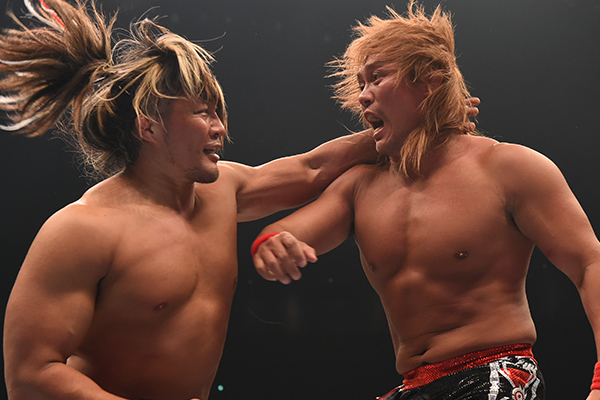
Speaking of inter-promotion politics, the end of 2016 saw the end of the NJPW/NOAH relationship of the past few years. The bigger company had been supporting the former giant of the industry after they fell on hard times, but a change in ownership of the green brand led New Japan to pull out all involvement.
One such wrestler returning from loan was Toru Yano, teaming with his Chaos stablemate Tomohiro Ishii to challenge for the tag titles against Makabe and Honma and champions Guerillas Of Destiny (Tama Tonga and Tanga Loa).
Ishii will always be a 5-star talent in a midcard push, but there are worse fates than winning the tag titles with Yano.
The new faces continued to arrive as Hiromu Takahashi returned to the stage after years away on-excursion to Mexico. The Time Bomb joined LIJ last November and fit right into the group with his unique look and charisma.
Kushida had been a solid champion, but the challenger’s high-risk daredevil offense was more effective. Takahashi’s dominance over the division was soon to come, and for this moment in time, all members of LIJ had titles.
Back to the NOAH problem, it was believed that Katsuyori Shibata was supposed to defend the Never title against one of their top stars before the relationship fell apart. Instead, they pivoted back to Hirooki Goto and their familiar rivalry. Their hard-hitting style was exactly what a top Wrestle Kingdom match should sound like.
Although Shibata lost his title here, his show of fighting spirit against the 2016 G1 runner-up helped prove his worth. For a man with only one shot at the IWGP over 10 years ago, going up against the man who always got them, perhaps Shibata was overdue.
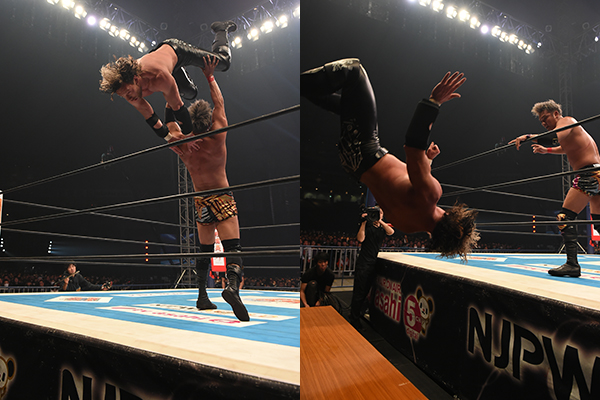
The semi-main saw Naito defending his Intercontinental championship against the man who had headlined Wrestle Kingdom 7 years in a row. The irony of their situation was not lost on Tanahashi, who brought up the possibility that a fan vote could shift them into the main event spot.
Naito rejected the concept, just as he rejected the entire idea of Tanahashi. Their history went back years. Naito was a young boy when Tanahashi helped save the company in the mid-2000s. Naito was supposed to be the Ace’s successor while Okada was gone. And it was their 2013 G1 final that cursed Naito’s destiny.
The match saw both men target the other’s knees. A career of being the high-flying superstar is hell on the joints. Despite the 40-year-old Tanahashi moving down the card, he still played the hits like pumping up the crowd, diving from the top rope to the floor, and slapping the spit out of his opponent.
But Naito gave as good as he got from the aging hero. With the Destino, Naito scored his first singles victory at Wrestle Kingdom. After tossing the IC belt in the air and posing over the fallen star, Naito gave Tanahashi the Ingobernable salute, a fist bump right to the heart.
The main event is the famous bout between G1 winner Kenny Omega and IWGP champion Kazuchika Okada. What can you say about the first WON 6-star match in nearly 30 years? It was a 46-minute epic where every segment was rich with story.
Although they were evenly matched to start, Okada was a little bit better. He chased the fleeing challenger to the outside and beat his ass on the floor. Omega’s cheating tactics helped turn the tide, and he excelled through aerial ability and avenues other than traditional grappling.
The heel was put through his own table via a giant backdrop over the ropes and it wasn’t even the craziest spot in the match. Okada won after multiple Rainmakers, but Omega still had the claim that he never hit the One Winged Angel, his unbeatable closer.
Despite NJPW vocally pushing Omega as the wrestler to lead westward expansion into the anglosphere, Okada and Gedo were the ones to close out the opening chapter of the Global Era.
NJPW in 2017

Wrestle Kingdom 11 was followed by one of the greatest years in New Japan history. In February, Okada had an amazing defense against Suzuki. In March, he had a great match against Ibushi.
In April, he had a fantastic defense against Shibata (in a violent 5-star classic that would keep Shibata out of the ring for years to come). He reached the one-year mark with the IWGP title and had two more historic bouts with Omega.
His reign continued through the end of the calendar, defining his career as one of the all-time greats.
NJPW was firing on all cylinders. Bullet Club had the West in a frenzy, with Hot Topic barely able to keep their shirts stocked and the Civil War storyline playing out through Being the Elite on YouTube.
They moved merch in Japan as well, but in the East, LIJ was a movement. Hats, towels, and plushies adorned the crowd. So when Naito defeated Omega in the G1 Climax Finals, all felt right with the world. “The company’s most popular wrestler,” as Meltzer called him, was headed to the Tokyo Dome main event for the first time ever.
It also should be mentioned that Ibushi was back on the roster, Tanahashi was rocking as IC champion, the Junior Heavyweight scene was rolling, and New Japan held their first solo shows in America and crowned Omega as IWGP US champion.
And to further attest to how hot the promotion was, look no further than when Chris Jericho arrived on the scene with his gaze set on Wrestle Kingdom.
Wrestle Kingdom 12

January 4, 2018: With paid attendance up nearly 10,000 for a capacity crowd, the Tokyo Dome show was vibrant proof of the astounding year NJPW had.
The Rumble was won by Masahito Kakihara, a wrestler plucked from the past who paid respect to his partner Yoshihiro Takayama, a puroresu legend. Takayama had suffered an injury in the ring some months ago that left him paralyzed from the shoulders down.
The main card opened with a glimpse of the future as Roppongi 3K (Sho and Yoh) put up the Junior tag titles against the Young Bucks.
The various generations of the New Japan Dojo tend to follow a set pattern of men born around the same time who debut around the same time and become stars around the same time.
Sho and Yoh had made their big return from excursion in October, joining the likes of Evil and Hiromu in the Sixth Generation. While the shiny, neon tag team showed promise, the Bucks weren’t ready to give up their spots just yet and won.
The Never 6-man gauntlet got a bunch of guys on the card. Perhaps the only thing of note was that Elgin appeared to be on the downswing while Zach Sabre Jr. was on the rise since joining the company last year. Ishii, Yano, and Baretta won the belts for Chaos.
A match that no longer had the ROH title on the line but still felt important was Ibushi beating Cody in a good match. Cody did his heel schtick well, but Ibushi looked phenomenal since returning to the fold as a full-fledged heavyweight contender.
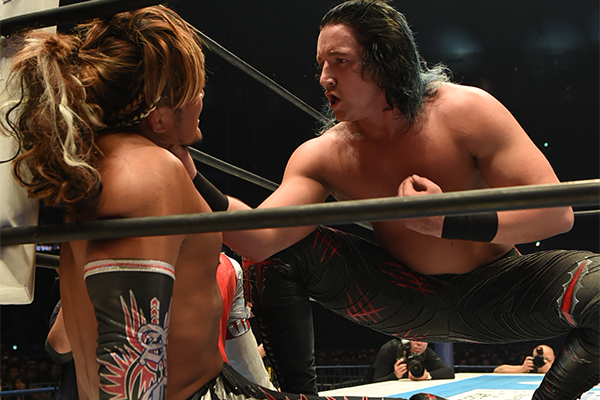
With the rise of Los Ingobernables in 2017, Evil and Sanada had solid matches against Okada, with Evil beating the IWGP champion in the G1 Climax. Having won the Tag League, they challenged Killer Elite Squad for the belts.
The giant monsters beat them down over and over until Sanada scored the victory with the Muto Moonsault.
Goto won the NEVER title back from Suzuki in a hair vs hair deathmatch after losing it last April. While seeing these two fight for the fourth (if not fifth) most important title may not seem so important, puroresu was born in the fighting spirit of seeing the downtrodden persevere to success.
Goto getting his ass kicked and Suzuki shaving his own head as a pound of flesh means more to Japanese culture than just a wacky wrestling stipulation.
Afterwards, Will Ospreay won the Junior title in a crazy four-way against Kushida, Hiromu, and champion Marty Scurll. The intense, nonstop style had accelerated across PWG, NXT, and WWE, but perhaps nowhere better than NJPW.
The overall skill level saw the number of WON 5-star matches expand from 3 per year in 2015 and 2016, to 8 in 2017 and growing.
Wrestlers were raising the bar. Ospreay doing a moonsault off a giant lighting rig was an early shine moment, and Hiromu’s diving powerbomb to the outside happened multiple times.
Even though Ospreay had won the Junior title before, winning at Wrestle Kingdom confirmed his work for the past two years.
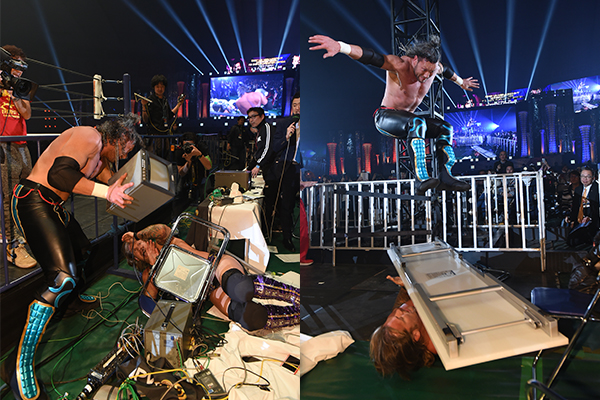
Jay White being third from the top in his Wrestle Kingdom debut was a huge vote of confidence. He was a 25-year-old returning from an excursion with an over-the-top gimmick challenging Tanahashi. The huge push brought obvious Okada comparisons.
White did well enough working the knee while Tanahashi returned the favor to once again teach a young upstart what it means to be Ace. Switchblade failed to win the IC title and perhaps in getting over with the audience as much as he’d hoped, but that didn’t stop him from walking right into a feud with Kenny Omega.
Inspired by the Mayweather/McGregor fight from 2017, the Jericho/Omega program was framed as something you weren’t supposed to see. Jericho had worked for one company for close to two decades.
Two worlds collided as the WWE stalwart crossed the line to Japan, bringing over legions of fans and NJPW World subscriptions just to watch Wrestle Kingdom.
The No-DQ match saw tons of plunder, brawling on the outside, and blood. Omega defended his US title in a fantastic bout, but it would not be limited to a one-time spectacle that the result might indicate.
It didn’t take an elite eye to look at the business that match produced and want to try it again in America.
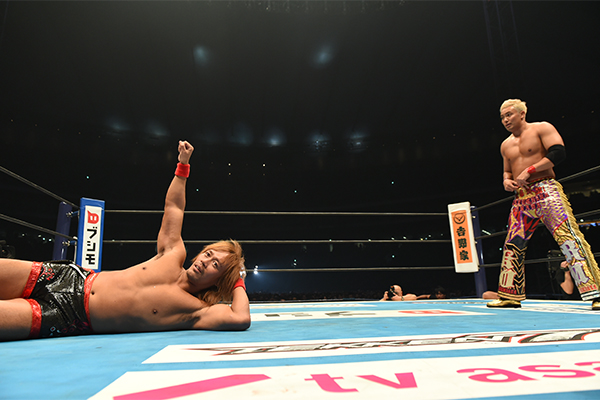
Perhaps the lasting legacy of the WK12 main event was the debut of Okada’s long, baggy pants. With 6 years as the Rainmaker and a monstrous title reign, a change in attire helped spruce up his aura.
Since their last battle, Naito had transformed himself as well. Where once the crowd rejected him, he could now lay claim to the very word that cursed him. He was the “shuyaku” – the protagonist of New Japan.
The thing about this era of Okada was that his matches were often so great they became average. It doesn’t really kick into high gear until he hits the dropkick around 30 minutes in.
The LIJ leader held the crowd in the palm of his hand, and the third act was incredible, but something was still amiss.
Naito had decried the Jericho match being promoted as the co-main event as NJPW chasing the tail of WWE. And maybe he was still personally hurt. Even on the grandest stage prepared in his honor, Naito kept appealing to the crowd and motioning for his old finisher, the Stardust Press, off the top rope.
One last time was one too many, as Okada hit another Rainmaker and retained the IWGP Heavyweight Championship.
Because the magic about storytelling is that heroes often fail. A bigger legend was being told, as Okada was still chasing Tanahashi’s defenses record. He was chasing puroresu history: Kobashi, Inoki, if not Rikidozan himself.
As Naito took his time stumbling to the back, obsessed with this one building on this one date, Okada told him they would meet again in the main event someday. He also vowed to sell out every seat in the Tokyo Dome. Plenty of prophetic notions on another great edition of Wrestle Kingdom.
NJPW in 2018

The hits kept on coming after Wrestle Kingdom. Chris Jericho started a feud with Naito. Suzuki beat Tanahashi for the IC title. And Jay White defeated Omega for the US title, fracturing Bullet Club.
Cody turned on Kenny after the loss and months of infighting. He was prepared to take the Cleaner out for good. But Kota Ibushi, Kenny’s old partner from DDT, ran in to make the save and reunite the Golden Lovers.
In February, Chaos swept LIJ in title matches: Ospreay defeating Hiromu, Goto defeating Evil, and Okada defeating Sanada. In March, Zack Sabre Jr. tapped out everyone to win the New Japan Cup, Shibata was put in charge of the new LA Dojo, and the Golden Lovers beat the Young Bucks in a fantastic match for NJPW’s 2nd American show.
At Sakura Genesis in April, Golden Lovers fell to Hangman and Cody, while Okada beat ZSJ to tie the record.
On the first night of Wrestling Dontaku in May, Bullet Club celebrated its 5-year anniversary with a main event of Kenny Omega defeating Hangman Page. On the second night, Okada defeated Tanahashi to surpass his record for most defenses at 12.
Having conquered the mountaintop, the Rainmaker knew he had to settle his 1-1-1 record against Omega.
Dominion 6.9 began with Harold Meij stepping out of the shower and into the President’s role of New Japan Pro Wrestling. The European businessman vowed to take the company to new heights in its Global Age. Normalcy was being broken, now more than ever.
The Young Bucks won the Heavyweight tag titles. Chris Jericho beat Naito for the Intercontinental title. And Omega defeated Okada to win the IWGP championship in their fourth match.
It’s the only WON 7-star match, taking place between the greatest challenger and the greatest champion to end the greatest reign. It doesn’t get much higher.

Then things changed. In July’s return to America, Hiromu Takahashi broke his neck and vacated the Junior Heavyweight title. During the G1, Okada was losing his mind: dyeing his hair red, carrying comfort balloons, and breaking up with Gedo when he didn’t advance out of his Block.
Instead, old man Tanahashi went on a miracle run to the Finals and beat Kota Ibushi to win the main event spot at Wrestle Kingdom.
All the highs of the past year or so should be considered under the specter of All In. Since 2017, Cody and the Young Bucks had vowed to put on an independent show to fill out a 10,000-seat venue. Tickets sold out in minutes.
Over Labor Day weekend 2018, All In was a smash success under the leadership of the Elite, ROH production staff, and even with some help from Omega, Okada, and Ibushi. And soon enough, an American businessman named Tony Khan was filing trademarks for a new promotion.
New Japan knew that the Elite’s contracts were expiring soon. And they had just fought WWE tooth and nail to book Madison Square Garden for a ROH/NJPW supercard next April. With All Elite Wrestling set to be announced in the new year, the question on where Kenny Omega would land was legitimately up in the air.
Wrestle Kingdom 13

January 4, 2019: Yet another increase in attendance meant that 17 years after the magic of the 90s glory period had run dry, NJPW once again had a legit sellout at the Tokyo Dome. And as one journey ended, things were bound to change.
The preshow Rumble was replaced with a 5 team trios gauntlet. But instead of old-school cameos, those participating were Wrestle Kingdom mainstays like Suzuki and Goto or new school projects like Hangman Page and Jeff Cobb. The main card was either that stacked or that bloated.
The proper show opened with Will Ospreay challenging Kota Ibushi for the Never Openweight title. The famous top rope Frankensteiner GIF happened just a few weeks earlier in the buildup.
Ospreay was moving up to Heavyweight, and Ibushi played the role of Nakamura, giving him a stiff welcome just as the King of Strong Style had done to him at WK 9. The match was incredible, with crazy dives, counters, and shots to the head.
Ospreay was put over huge in victory, as Ibushi sold the Hidden Blade on a stretcher.
Starting off hot may have been the motive, but that great of a match also anchored what turned out to be an underwhelming undercard. Shingo Takagi had made his big debut in October, joining LIJ to supplement the absence of Hiromu.
Though he doesn’t seem like a junior heavyweight, he was a star in Dragongate, which is known for high-flying and fast-paced action, even if he necessarily wasn’t. Takagi and Bushi won the Junior tag titles, beating Suzuki-gun and Roppongi 3K in a short sprint.
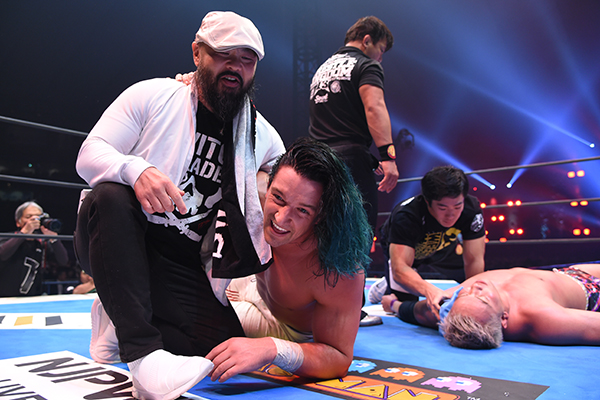
To cap off the stellar year he had, Zack Sabre Jr. beat Ishii for the RevPro British title. It was an exciting clash of styles as the lanky technician tapped out the brawling fire hydrant to see who would be New Japan’s best role player.
Everything from the Junior threeway to even the Okada match felt remarkably lacking to the Wrestle Kingdom standard.
Sanada and Evil won the tag titles again, beating GOD and the Young Bucks, pinning Matt Jackson. And in a rematch from WK 11, Juice Robinson beat Cody for the US title. That was the official wrap on the Elite, as they had already announced signing to AEW on January 1st.
The Junior Heavyweight title bout didn’t feel like a classic top 4 Wrestle Kingdom match either. Taiji Ishimori had come over from NOAH to join Bullet Club, or at least a fragment of it, as the Elite officially separated from the faction.
Ishimori beat Kushida for the belt in an 11-minute match filled with nothing but big moves, sending Kushida to WWE soon after.
And even with the glorious return of his golden hair and short pants, an Okada match going 14 minutes just doesn’t seem right. Plenty of Bullet Club chicanery helped deliver Jay White the victory out of nowhere, with Gedo standing by his side to openly recreate history with the Switchblade shock.
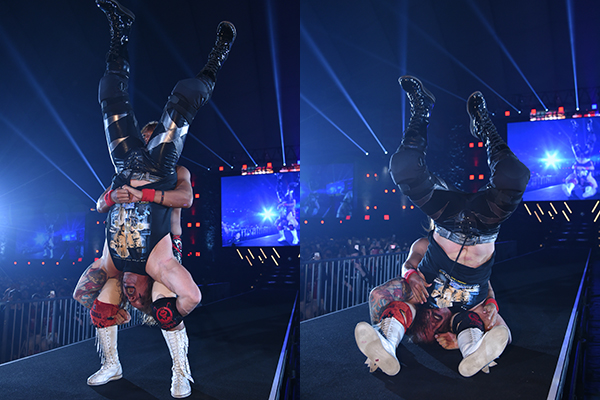
The semi-main saw a welcome change of pace as Jericho and Naito brawled in a weapons-filled No-DQ match over the Intercontinental title. The story played off of what they built for 364 days, perhaps even longer, depending on how you look at it.
Jericho couldn’t rely on the low blow that won him the title, but Naito found help in his old rival: the IC strap itself.
The object he tossed around for years, to the point where the belt was physically falling apart. Naito hit a belt shot and the Destino for the victory, and he carried his new prize out of the ring with care: a moment of personal growth.
The main event had massive implications as Tanahashi challenged Omega for the IWGP championship. If Omega won, he would be solidified as part of this generation’s musketeers alongside Naito and Okada.
If Tanahashi won, it would be the perfect ending to his redemption arc, and Omega would be that much closer to leaving.
Anyone who knows history or has eyes can see that Tanahashi’s body was shot. But he gave his all to have a fantastic match. Omega wanted to demote and destroy the old man, but for one last time, Tanahashi showed that the Ace doesn’t lose at the Tokyo Dome.
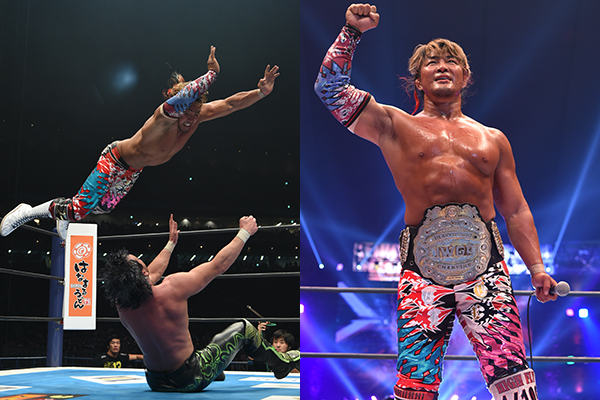
Aftermath
2019 was a milestone year for Japanese professional wrestling. 65 years ago in 1954, Rikidozan laid the foundation for puroresu. 30 years ago in 1989, the modern age began. On May 1, 2019, Japan announcing the beginning of the Reiwa Era. And 2020 would change everything.




